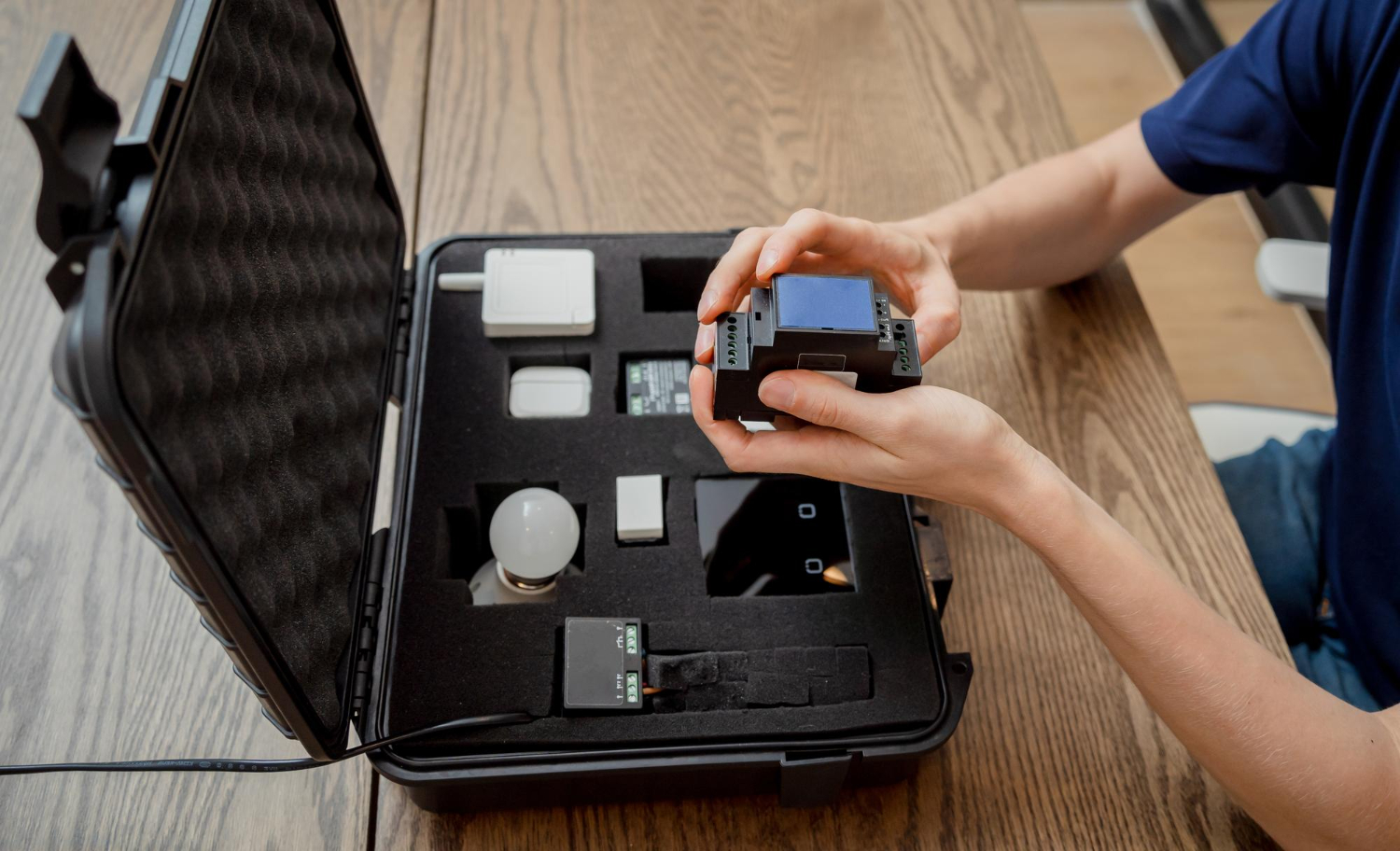Military grade cases do more than just store gear. They act as a first line of defense for equipment under rugged conditions. Whether used in transport, field operations, or long-term storage, these cases are expected to protect sensitive tools and electronics from impacts, pressure, and harsh surroundings. One challenge that often goes overlooked is how weather affects their performance.
Extreme temperatures, rain, humidity, and dust all influence how well a military case holds up under pressure. These weather conditions are not just side factors. They are constant threats in real-world use, especially in areas with seasonal extremes like Rochester, NY. Choosing the right materials, seals, and structure becomes even more important when environmental stress is part of the daily routine. That’s where engineered packaging makes a difference. It’s built to keep the inside contents safe and operational no matter the outside conditions.
The Impact Of Extreme Heat
High temperatures can do more than raise the surface temperature of the case. In extreme heat, materials begin to respond in different ways. Plastic parts may expand, warp, or soften. Adhesives can lose their grip. If the case is exposed to direct sunlight or sits inside a hot vehicle, heat can build up inside and damage sensitive items.
Summers in Rochester, NY can bring inland heat and strong sun exposure, especially in enclosed spaces. In these moments, basic packaging might break down. Military grade cases have to do more than survive heat. They must maintain full protection when the environment heats up quickly and stays high for hours.
Some common issues from heat exposure include:
1. Warping or softening of plastic that impacts case strength
2. Weakening of adhesive seals or lining materials
3. Heat accumulation inside affecting sensitive electronics
4. Expansion of components making the case hard to open or close
5. Foam inserts melting or losing their shape, reducing cushioning
To fight these problems, the structure needs to account for temperature changes. Dual-wall or insulated construction helps. Vent systems that allow heat to escape but keep dust out can also help reduce internal stress. The goal is to keep inside temperatures stable while protecting the case’s form and function.
The Challenges Of Severe Cold
On the opposite end, cold conditions like those seen in Rochester winters bring their own issues. When the temperature drops low, plastic can get brittle. Metal can contract. Any moisture trapped inside a case can freeze. These shifting conditions can create cracks and gaps that hurt the case’s performance.
One major concern is flexibility. A case that handles impact well under warm conditions may shatter when frozen. Hinges and latches may snap without the stretch they need. Seals can harden, creating space for cold air or chemicals to sneak inside.
Common issues that arise in cold weather include:
1. Reduced strength in plastic, especially at edges or corners
2. Cracked or broken latches and hinges from rigid stress
3. Frozen seals failing to close tight
4. Internal cold causing damage to fragile electronics
5. Frost leading to buildup and corrosion over time
Cases meant for cold use benefit from materials tested for low-temperature durability. Reinforced plastic blends or specialized alloys hold up better. Foam inserts should retain shock absorption while also helping insulate. Moisture protection like sealed lining or desiccants offers another level of protection during harsh winters.
For all-season performance in Rochester, choosing materials and features suited for both heat and cold is the first step in avoiding avoidable damage.
Moisture And Humidity Concerns
Moisture causes some of the worst hidden damage. A small amount of water can work its way inside and slowly break down tools, electronics, manuals, and parts. Humid environments are especially risky. Rochester summers and sudden storms can push humidity high, even in storage spaces.
Moisture doesn’t just enter when it rains. Condensation can form after moving cases between cool and warm areas. That sudden change makes water appear on surfaces that seemed dry before. If a case isn’t built to handle it or lacks the right seal, the contents start to take the hit.
Ways to reduce the risk of water-related harm include:
1. Selecting seals that stay strong and repel water even over time
2. Adding moisture-absorbing liners or inserts
3. Avoiding foam that soaks in water and holds mildew
4. Using inner materials that don’t support mold or rust
5. Designing airflow that balances pressure without letting moisture in
Rochester warehouses and garages go through wide humidity swings. Any case left on a shelf for too long without moisture control can be affected before it’s even used. Choosing engineered packaging with weather awareness makes sure the gear stays ready when it’s needed.
Abrasion From Wind, Dirt, And Sand
Wind doesn’t just push air. It drives dirt, dust, sand, and other small particles into every crack and seam it can find. That means scratches, scuffing, and long-term damage both inside and out. Equipment might arrive with dull blades, coated electronics, or jammed hinges from tiny bits that worked their way in.
Heavy winds, dusty roads, and open-air transport all contribute to this problem. Even around Rochester, road debris or construction dust kicked up in storms can wear down surfaces and cause trouble.
Here are a few ways to prepare for abrasive threats:
1. Reinforced hinge and latch areas that hold firm under repeated use
2. Hard outer shells that resist wearing down from travel
3. Clean seams that don’t allow sand or dirt to creep in
4. Vents that block debris while helping with airflow if needed
For example, gear heading from a Rochester warehouse to a field site might face dry roadside dust, wind gusts, or even just the jostling of the road. A steel blade or screen lens can get scratched before it’s ever unpacked if fine particles sneak in through weak points in the case.
Ensuring you have abrasion protection up front reduces these kinds of problems without the need for constant inspection after transit.
Staying Ready Across Changing Environments
Weather is rarely one-note. It’s a mix of hot, cold, wet, dry, clear, and windy—sometimes all in the same week. Military grade cases need to be ready for each of these swings, especially when used across seasons or shipped far distances. That variety puts stress on every part of the case.
Engineered packaging steps up where one-style solutions fall short. Packaging needs to support performance in cold January mornings and humid August afternoons alike. It should be strong enough to block out moisture while still durable enough to take a few knocks and drops.
Reliable packaging for mixed weather conditions will focus on:
1. Staying flexible in both warmth and cold without cracking
2. Keeping internal temperature balanced and moisture out
3. Blocking dust and grit without stopping airflow
4. Having soft but strong interiors that keep contents in place
Looking ahead to the weather conditions your cases may travel through can help prevent bigger problems later on. Whether they stay around Rochester or get shipped further out, building weather-ready features into the case avoids damage and keeps things working longer.
Why Material Choice Matters More Than You Think
Military grade gear is made to last. The cases that carry them should be held to the same expectation. Shifting weather brings more than surface-level changes. It brings pressure, tension, and risks that eat away at equipment from all directions.
Protecting your gear from harsh conditions means working with packaging that’s built for it. That includes high heat, deep cold, heavy rain, salty roads, and flying grit. Without the right materials or design, even a well-made product can fail in extreme weather. That’s why engineered packaging is more than just a container—it’s a defense layer.
Whether you’re housing communication tools, medical kits, or field electronics, a smart case keeps everything performing the way it should. From preventing cracks to blocking leak paths, good packaging can stop damage long before it starts. Each piece of gear needs a case built for where it’s going, how it’s stored, and what it might face along the way.
Orcon Industries supports that performance by offering solutions that are made to stand up to the job. When your equipment needs a better defense, we’re here to help build the case around it.
When it comes to protecting your equipment against Rochester’s changing weather conditions, selecting the right packaging is important for peace of mind. Learn how Orcon Industries designs engineered packaging to withstand diverse environmental challenges, keeping your military grade cases ready for anything nature throws their way. Whether it’s heat, cold, moisture, or abrasive elements, trust us to help protect the integrity of your most valuable gear.




